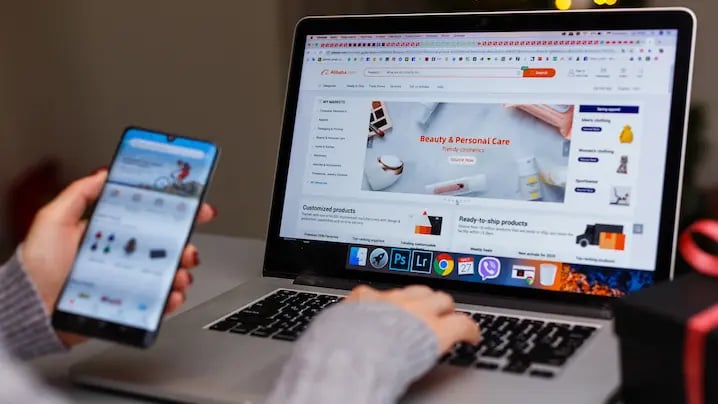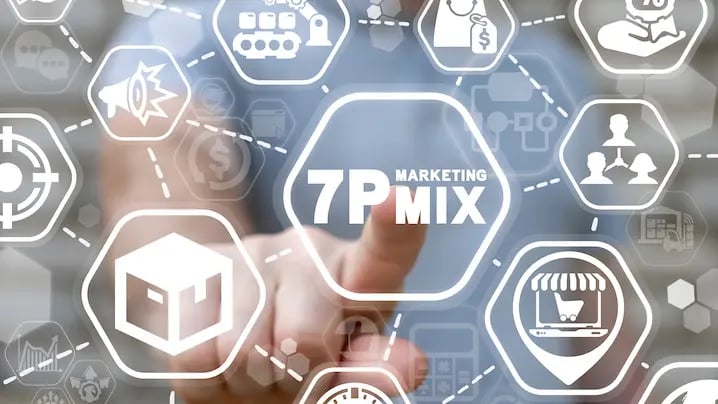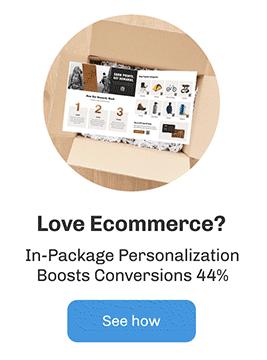Marketing Product Lifecycle Guide - The Ups and Downs
Every consumer product out there has what’s known as a product life cycle or PLC. From the moment a product enters the market, it has a “life cycle” that goes from its introduction to the market to being completely retired.
Every product has a cycle like this, and every Ecommerce company needs to understand the potential PLC of their items related to their marketing efforts. If you aren’t already familiar with the PLC, we’re here to help you understand the basics of what it is and how it may apply to your consumer products.
Ready to learn more about the marketing product life cycle and see how it can help your brand grow?
| Marketing Product Lifecycle |
What is the Marketing Product Life Cycle?
A product life cycle is a process that every consumer product goes through from introduction to removal from the market altogether. Every product goes through the same process, even though every product has a different length of life cycle to go through.
The four stages are introduction, growth, maturity, and decline.
Many brands today will use a product life cycle analysis in order to create strategies that will help sustain their product’s longevity or help their product adapt to meet the demands of the market. Understanding the stages of the product life cycle can help your products adapt over time so that they can stay relevant in the market even longer.
What Are the Stages of the Marketing Product Life Cycle?
It’s important to understand the relevance of the product life cycle as it relates to marketing, but it’s even more important to understand each of the stages involved and what their purpose is. Let’s take a look at each of these stages in-depth.
What is Involved in the Introduction Phase of the Marketing PLC?
After a product is developed, it enters into the first stage of the product life cycle, known as the introduction stage. In this stage, the product is “introduced” into the market for the first time. This is a very important stage in the product’s overall PLC, but it won’t necessarily “make” or “break” the product as other stages of the cycle can.
Focusing on a strong introduction is often a great way to get a product started off on the right foot. During this introduction stage, marketing and promotional efforts should typically be at an all-time high. Keep in mind this also means that the introduction phase of a PLC can also be a heavy-spending period for your brand. There is no way to tell what type of ROI there will be during this phase so there is some risk during the introduction step.
When products can get into the hands of consumers right away, it typically fares well for the rest of the PLC. This is why brands like Apple will put so much emphasis on the launch of their latest iPhones, they want a strong introduction phase of the cycle to make a splash right out of the gate.
Here’s what to pay attention to during the introduction phase:
- While heavy spending is often required, make sure to have projections in place for what type of return you can expect on this item.
- This is a time when you don’t have to focus much on the competition, so keep your focus on the product launch itself, not what others are doing.
- One of the biggest focuses of this stage is simply getting products into the hands of the consumer while hoping your efforts pay off down the line.
- This is a stage where you will first be able to get a sense of how consumers will feel about your product and can help predict future growth patterns.
- The primary goal of this stage is to build demand for the product.
There are a lot of unknowns during the introduction phase, but this part of the life cycle will reveal a great deal about the future success of your product.
What is Involved in the Growth Phase of the Marketing PLC?
After the introduction phase comes the growth stage, where consumers start actually buying the product. The main goal during this stage is simple: to make sure the product becomes popular so that sales increase.
While brands don’t have to worry as much about the competition during the introduction phase, as you enter into the growth phase, other companies may start to be aware of the product and how it’s doing in the market, especially as it starts to get more attention.
If competition in this particular market space is high, this may be the time to start investing more heavily in marketing and advertising. The goal of marketing during this phase should be at increasing the product’s share in the market. The growth stage is a time to invest in advertising so that the product grows within the market.
This is also a time to tweak the product and improve different functions and features, if necessary. This may be something like updating technology, redesigning certain elements, swapping out materials—whatever is needed to keep the product relevant and in demand.
During the growth phase, it is not uncommon to see sales increase, but prices decrease as the competition gets stiffer.
What is Involved in the Maturity Phase of the Marketing PLC?
Once a product reaches maturity, sales start to slow down. This typically happens when the market for that particular product gets saturated. When this happens, sales may start to drop and pricing within the market gets more competitive.
Many brands first notice that their profit margins start to shrink, signaling they are entering this maturity phase. However, it doesn’t mean that your brand shouldn’t be investing money into the marketing of this product.
At this point in the cycle, marketing efforts should be focused primarily on warding off the competition. When products reach maturity, it may also be a time to develop new adjacent or updated products that will reach different segments of your brand’s target market.
There is no telling how long or short this phase will be. Overall, in this stage, you will eventually max out your sales volume, and while you can maintain your market share, a big focus should start to shift to how you can keep up with new consumer demographics or technologies.
Most companies will work to keep their product in this phase as long as possible until it inevitably enters the final stage and declines.
What is Involved in the Decline Phase of the Marketing PLC?
The decline phase of the PLC marks the eventual end of a product. Although most brands will attempt to keep their products going during this stage, inevitably every product will eventually become obsolete.
The decline phase is hallmarked by sales dropping significantly and companies noticing major changes in consumer behaviors. Overall, it all comes down to less of a demand for a certain product. Over time, the product will lose more of the market share and sales will start to plummet.
There isn’t much marketing involved in this stage, most brands slowly start to invest their marketing dollars elsewhere or make attempts to target loyal customers with further price reductions, holding on to whatever sales they can as their numbers peter out.
Eventually, all products will retire or will be completely reinvented or redesigned. The key is knowing when to let the product go, when to redesign or when to start over.
Even the best products eventually end up in the decline phase, but there is nothing to worry about. The cycle always keeps going, which means it’s time to head back to the drawing board and start again, always keeping your marketing efforts at the forefront of the cycle.
 You've made it this far and you've learned so much. Congratulations!
You've made it this far and you've learned so much. Congratulations!
If you're looking to learn more about marketing or Ecommerce in general, feel free to reach out to us at: solutions@undigital.com
You May Also Like
These Related Stories

The Top Ecommerce Marketing Courses

Building an Ecommerce Business From the Ground Up in 2022


